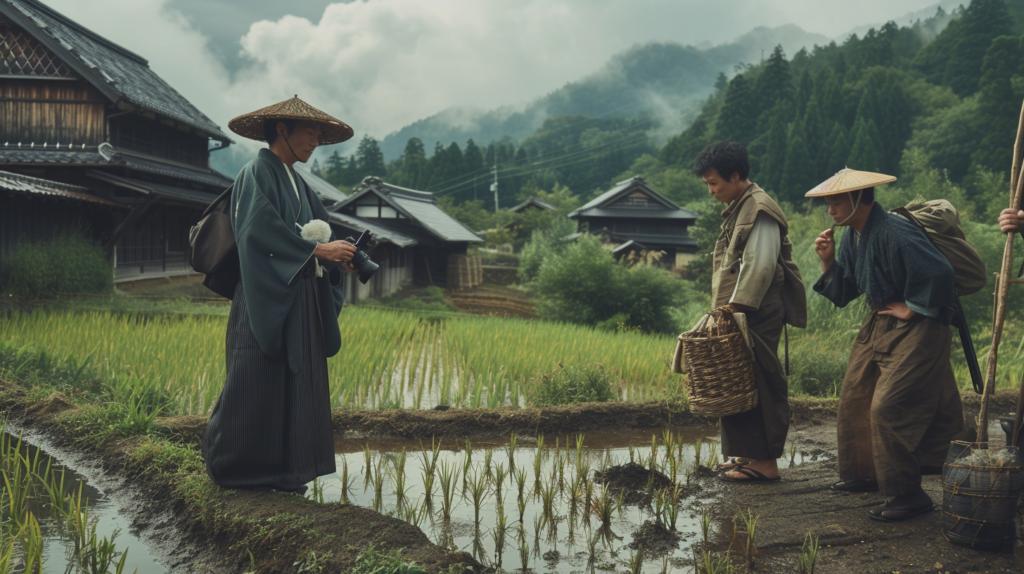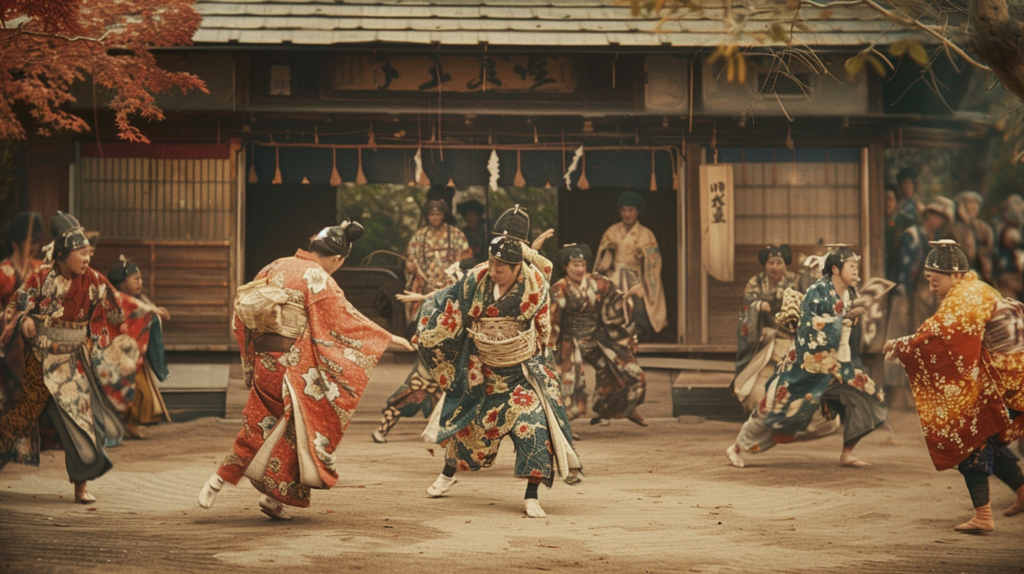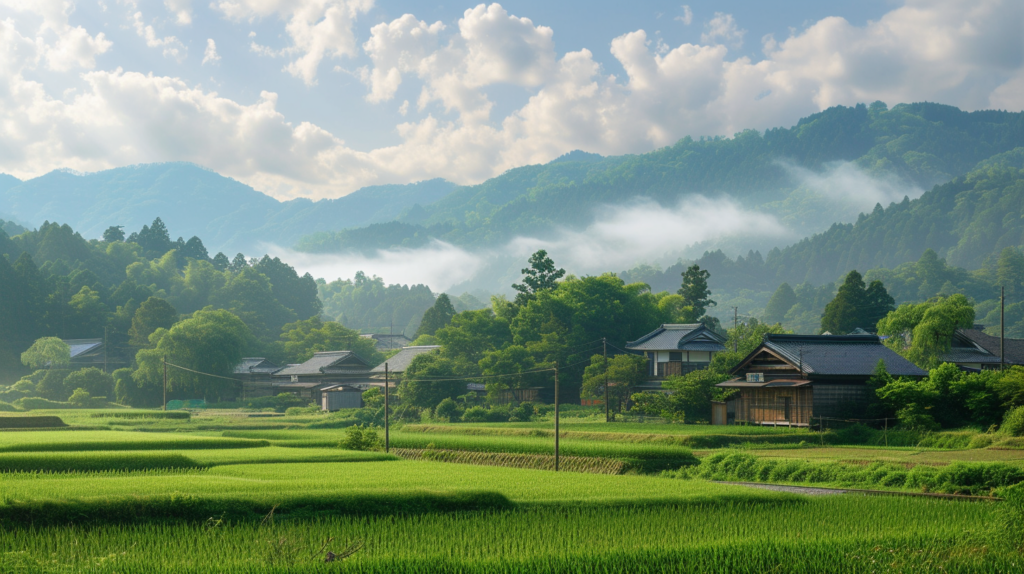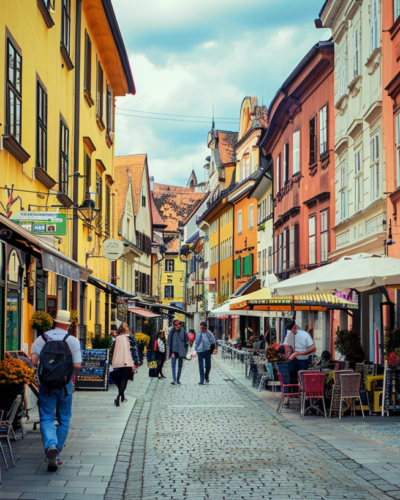Step back in time with a photographic journey to rural Japan in the late 1800s, where tradition meets the brink of modernity. Through the lens of pioneering photographers like Suzuki Shin’ichi, explore the rich tapestry of life, culture, and transformation during a pivotal era in Japan’s history.

Journey to rural Japan in the late 1800s, a period teeming with transformation and timeless tradition. This era, poised delicately on the cusp of the modern world, offers a fascinating glimpse into a life far removed from the high-speed trains and towering skyscrapers that define contemporary Japan. Through the pioneering lens of early photographers like Suzuki Shin’ichi, we are granted a rare window into the daily lives, cultural practices, and serene landscapes of a Japan that is balanced between the enduring customs of the Edo period and the beckoning tide of global engagement.
This visual odyssey not only showcases the stunning aesthetics of rural Japan but also tells the profound story of a nation navigating the waters of change and modernity.
The Dawn of Modernity and the Opening of Japan
As the 19th century unfolded, rural Japan stood at the threshold of a new era, marking a departure from the seclusion of the Edo period to embrace a future filled with innovation and international influence. This remarkable period witnessed the blossoming of ports like Yokohama, gateways that welcomed not just foreign vessels but the seeds of technological and cultural revolution.
The introduction of photography by figures such as the British-Italian Felice Beato and the adoption of this art by Japanese pioneers like Suzuki Shin’ichi painted a vivid picture of a nation in flux. Through their lenses, the story of rural Japan’s transformation unfolds, capturing the juxtaposition of traditional life against the backdrop of emerging modernity. This chapter of Japan’s history, rich in change and contrast, offers an unparalleled exploration for those fascinated by the evolution of cultures and societies.

Suzuki Shin’ichi’s Lens: A Glimpse into Rural Japanese Life
In the hands of Suzuki Shin’ichi, the camera became a tool to document the soul of rural Japan during its metamorphosis. Trained by photographer Shimooka Renjō who hails from Yokohama, Suzuki embarked on a mission to capture the essence of Japanese life far removed from the burgeoning urban centers. His photographs, a series of meticulously hand-colored images, reveal rural communities’ serene beauty and enduring traditions. From the tranquil poses of farmers amidst their fields to the elegant simplicity of traditional Japanese attire, Suzuki’s work invites us into a world where the rhythms of nature and the legacy of ancestors continue to shape daily life.
For modern travelers and cultural history enthusiasts, these images offer a bridge to the past, inviting us to experience the rich tapestry of rural Japan in the 1800s through a lens of beauty and authenticity.
The Cultural Tapestry of Rural Japan: From Farmers to Samurai
The diversity of rural Japan in the late 1800s, as captured through early photography, unveils a rich cultural tapestry woven with the lives of farmers, artisans, samurai, and everyday folk. These images testify to the complex societal structures and lifestyles that characterized the period. From the rugged diligence of agricultural life to the disciplined elegance of the samurai, each photograph tells a unique story of survival, honor, and community. This visual narrative highlights the social diversity of the time and underscores the cultural richness that continues to define Japan.
As we delve into these historical snapshots, we uncover the layers of tradition and heritage that form the foundation of contemporary Japanese society, providing a source of endless fascination for those who seek to understand the depth of Japan’s cultural identity.
The Introduction of Western Influence and Its Impact
The late 1800s was a crucial period for Japan as it navigated the waters of Western influence, ushering in a wave of modernization that touched every aspect of Japanese life, including rural areas. The opening of Japan to the West brought about a cultural exchange that introduced new technologies, ideas, and aesthetics.
Yet, rural Japan absorbed and adapted these influences while retaining its deeply rooted traditions. This unique blend of Western modernity and Japanese tradition is evident in the architectural styles of the period, the evolving agricultural practices, and the subtle shifts in daily life captured in the photographs of the time. For those intrigued by the fusion of cultures, rural Japan’s adaptation to Western influence provides a fascinating study of resilience and change, offering valuable insights into how global interactions can shape and enrich local traditions.
Preserving Traditions Amidst Change
As Japan hurdled toward modernization, the preservation of its cultural traditions became a poignant theme in rural communities. The photographs from this era not only document the physical appearance of rural Japan but also serve as a testament to the efforts made to maintain traditional ways of life. Ceremonies, festivals, and the meticulous practice of arts and crafts continued to flourish, captured in vibrant detail by photographers of the time. These visual records highlight the importance of cultural preservation and its role in maintaining a society’s identity amidst rapid change.
For contemporary travelers and cultural enthusiasts, these images are a reminder of the value of heritage and the enduring power of community and tradition in the face of global shifts.
The Evolution of Rural Landscapes
The transformation of rural landscapes in Japan during the late 1800s reflects the physical changes brought about by modernization and the shifting relationship between the Japanese people and their environment.
The introduction of new agricultural techniques and the gradual shift from feudal to more modern land management practices began to alter the countryside, changes that were thoughtfully documented by photographers of the era. These images offer a unique perspective on the evolution of rural landscapes, from terraced fields to the introduction of railroads, illustrating the dynamic interplay between human progress and the natural world.
For modern viewers, these photographs provide a window into the past, showing how landscapes can tell the story of a nation’s development, challenges, and triumphs over time.
Rural Japan in Modern Times
The enduring legacy of rural Japan in the late 1800s resonates in modern times, serving as a foundation for contemporary Japanese values, aesthetics, and community life. The intricate balance between tradition and innovation, so vividly captured in the photographs of the era, remains a hallmark of Japanese culture.
Today, the influence of this pivotal period can be seen in the ongoing reverence for nature, the preservation of ancient crafts, and the celebration of seasonal festivals that still punctuate life in rural and urban Japan alike. This connection between past and present is a testament to the lasting impact of the country’s historical journey through modernization.
For travelers, historians, and anyone drawn to the depth of Japanese culture, understanding this legacy offers a deeper appreciation for the nuances of Japan’s identity and its contributions to global heritage. The photographs of rural Japan in the 1800s not only document a time of profound change but also invite us to reflect on how history shapes our current world, reminding us of the timeless beauty and wisdom embedded in Japan’s rural heritage.

A Timeless Legacy Captured Through the Camera’s Eye
The photographic exploration of rural Japan in the 1800s serves as a poignant reminder of the country’s rich cultural heritage and its journey through an era of significant transformation. These images, brimming with the life and spirit of the times, offer more than just historical documentation; they provide a bridge to understanding the soul of Japan and its people’s resilience in the face of modernization.
As we reflect on these hand-colored glimpses into the past, we are reminded of the beauty and complexity of rural Japan, a testament to the enduring allure of its traditions and landscapes.
For travelers and history enthusiasts alike, these photographs are a treasure trove of inspiration, inviting us to delve deeper into the stories and legacy of a Japan that continues to captivate the world’s imagination.








